1. Leak Detection and Localization
AI enables water utilities to detect hidden leaks much faster and more accurately than traditional methods. Machine learning models continuously monitor flow, pressure, and acoustic sensor data to spot anomalies that indicate leaks. Early detection and pinpoint localization of even small leaks help prevent major water losses and infrastructure damage. By catching leaks sooner, utilities can dispatch repair crews promptly and reduce non-revenue water. Overall, AI-driven leak detection minimizes wasted water, lowers repair costs, and improves network reliability through proactive maintenance.

Field deployments show AI-based leak detection significantly outperforms manual monitoring. For example, one machine-learning leak detection platform achieved 80–90% success in identifying leaks and about 90% accuracy in locating their exact pipe location. Techno-economic analysis indicated that in Cleveland’s water system, this AI system could recoup over $7 million annually in saved water revenue by reducing non-revenue water through early leak repairs. Similarly, researchers have used acoustic emission data and ensemble machine learning to detect leaks in real distribution pipes, attaining high precision. A 2023 study reported that an AI model could detect leak events with over 80% accuracy and substantially lower false alarms compared to conventional methods. These data-driven approaches allow utilities to find and fix underground leaks long before they surface, dramatically cutting water loss.
2. Demand Forecasting
AI is transforming how water demand is predicted, allowing utilities to plan supply proactively. Machine learning models analyze historical consumption along with factors like weather, seasonality, population growth, and events to forecast future water use. These forecasts can be both short-term (hourly/daily) and long-term (seasonal or annual). With AI, demand predictions are becoming more accurate, helping water managers ensure sufficient supply and optimize storage and pumping. Anticipating demand also prevents over-production of water, reducing energy costs and waste. In essence, AI-driven demand forecasting leads to smarter resource allocation and more resilient water service under changing conditions.

Recent studies show that AI models markedly improve water demand forecasting accuracy. For instance, a 2024 study applied multiple artificial intelligence models (including neural networks and random forests) to project long-term water demand in a Chinese river basin, enabling reliable forecasts under various climate scenarios. In the short term, data-centric approaches have proven effective: researchers demonstrated that with just a year of training data, a machine-learning model could predict daily urban water demand with high precision. One experiment in 2023 found that refining data quality (e.g. cleaning and enriching input data) boosted forecast accuracy as much as trying more complex model structures. These AI-based forecasts guide utilities in optimizing pumping schedules and storage. In practice, utilities using AI demand predictions have cut energy use by avoiding unnecessary pumping during low demand periods and ensured water availability during peak use. Overall, machine learning has elevated demand forecasting to new levels of accuracy and responsiveness.
3. Pressure Optimization
AI techniques are used to maintain optimal water pressure throughout distribution networks. By continuously analyzing sensor inputs (e.g. pressures, flows) and consumer demand patterns, AI can determine ideal pump speeds and valve settings in real time. This results in more stable pressure, which prevents pipe stress and bursts. Optimized pressure control also saves energy, since pumps run only as hard as needed. In effect, AI-driven pressure optimization balances the system: keeping customer tap pressure adequate while avoiding excessive pressure in pipes. Over time, this extends infrastructure life and lowers operation costs by reducing leaks and energy consumption.

Deployment of AI for pressure control has shown notable benefits in practice. In Milan, Italy, a water utility implemented an AI-based, rule-based control system to adjust pumps and pressure-reducing valves continuously. Simulated trials demonstrated it could reduce energy consumption for pumping while maintaining service quality across the network. In fact, this AI optimization is now used in Milan’s water mains, yielding measurable efficiency gains. Another approach uses deep reinforcement learning to automate pump operations: a 2023 study introduced a hybrid RL algorithm that learned to meet pressure targets with minimal energy use. Such AI-driven control strategies have achieved significant energy savings. For example, researchers reported an optimized pump schedule that led to a 27% reduction in energy use on a test network with variable-speed pumps. By intelligently smoothing out pressure fluctuations and running pumps at optimal times, AI solutions are cutting both the electricity costs and mechanical strain in water distribution systems.
4. Real-Time Network Control
Intelligent control systems use AI to autonomously adjust water network operations in real time. Instead of static settings, the system reacts to sudden changes – such as demand spikes, fire flow events, pipe breaks, or pump failures – by instantly changing pump speeds, opening/closing valves, or re-routing flow. This dynamic response maintains service continuity and water pressure even under stress conditions. AI-based controllers effectively serve as an “autopilot” for water distribution, continuously balancing the network and handling incidents faster than human operators could. Real-time AI control improves reliability, reduces downtime, and frees up human operators to supervise rather than manually tweak controls.

Research and field pilots underscore AI’s capability for real-time water network control. In simulations, deep reinforcement learning agents have been trained to manage pump operations and valve settings moment-to-moment, successfully restoring normal pressures after disturbances (like a pipe burst) within seconds. One 2023 framework achieved near-optimal pump control policies that responded adaptively to demand swings while minimizing energy usage. Another study’s AI controller could adhere to operational constraints and still cut energy cost by learning the system dynamics on the fly. Notably, AI control can handle scenarios beyond pre-programmed rules: it “learns” the best response through experience. For example, a hybrid AI system was shown to stabilize a water network after pump failures without human intervention, keeping service pressure within acceptable range throughout the event. By 2025, some advanced utilities have begun integrating such AI controllers with their SCADA systems. These trials indicate that autonomous AI control can maintain water delivery during emergencies far more consistently, and efficiently, than purely manual control.
5. Predictive Maintenance of Assets
AI is used to predict failures of critical water infrastructure (pumps, valves, pipes) before they happen. By analyzing sensor data on equipment condition – vibrations, pressure, temperature, flow patterns – machine learning models can identify warning signs of deteriorating assets. Utilities can then perform maintenance or replace components proactively, avoiding sudden breakdowns. This predictive maintenance minimizes unplanned outages and extends asset lifespans. It shifts maintenance from a reactive approach (fixing after a break) to a proactive one (fixing just before a failure). The result is improved reliability, lower repair costs, and better allocation of capital to the assets that need it most.
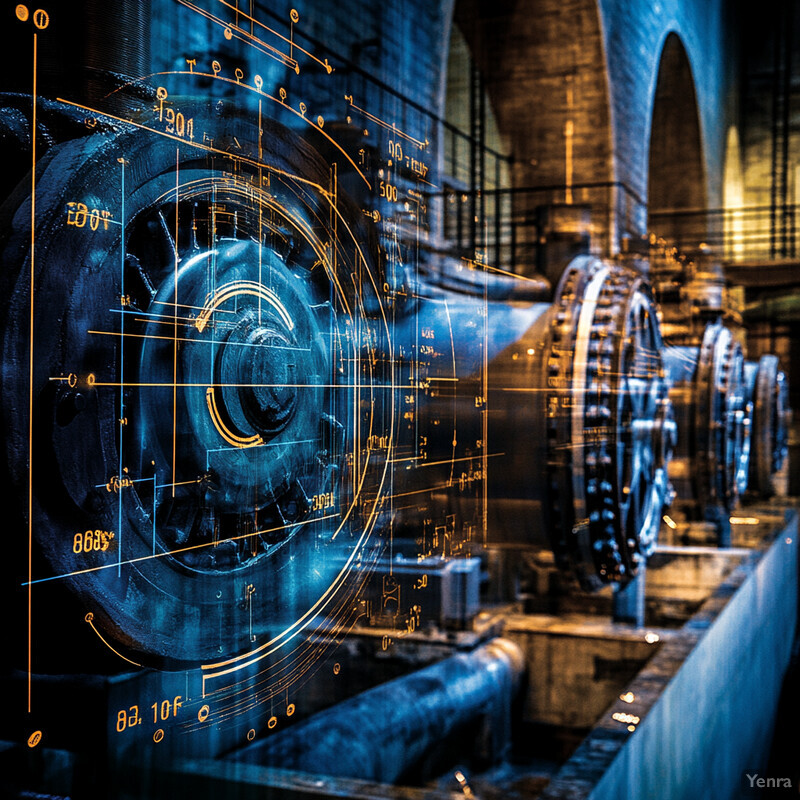
Data-driven predictive maintenance in water networks has yielded impressive results. A 2024 study developed an ensemble AI model to forecast water main failures, achieving very high accuracy in identifying pipes likely to burst. The model’s best configuration reached an extremely low error (RMSE about 0.0023), enabling utility engineers to pinpoint high-risk pipes with confidence. In real-world terms, such models help prioritize pipe replacements to preempt failures. Similarly, pilot projects have applied AI to pump and motor maintenance: one large U.S. utility used AI to monitor thousands of pump station components and reportedly reduced transformer failures by 48%, saving hundreds of thousands of dollars annually. The Water Research Foundation also found that AI leak detection systems improve as more data are collected – reaching up to 90% leak localization accuracy – which indirectly indicates failing pipe sections for preventive fixes. These examples show that AI-driven condition monitoring can flag subtle anomalies (like a slight vibration increase or pressure drop) that precede a mechanical failure, giving utilities a critical window to intervene and avoid emergency repairs.
6. Water Quality Monitoring
AI aids in maintaining water quality by rapidly analyzing sensor data for any sign of contamination or abnormalities. Modern distribution networks have online sensors for metrics like turbidity, pH, chlorine residual, and more. AI models can learn the normal ranges and complex correlations in this multi-sensor data. They can then instantly flag anomalies – for example, a sudden drop in chlorine or a spike in turbidity that might indicate contamination or a treatment issue. By catching water quality issues in real time, AI systems help operators respond faster (closing valves, flushing lines) to protect public health. AI can also optimize treatment processes by predicting water quality trends (e.g., anticipating when extra chlorine might be needed).
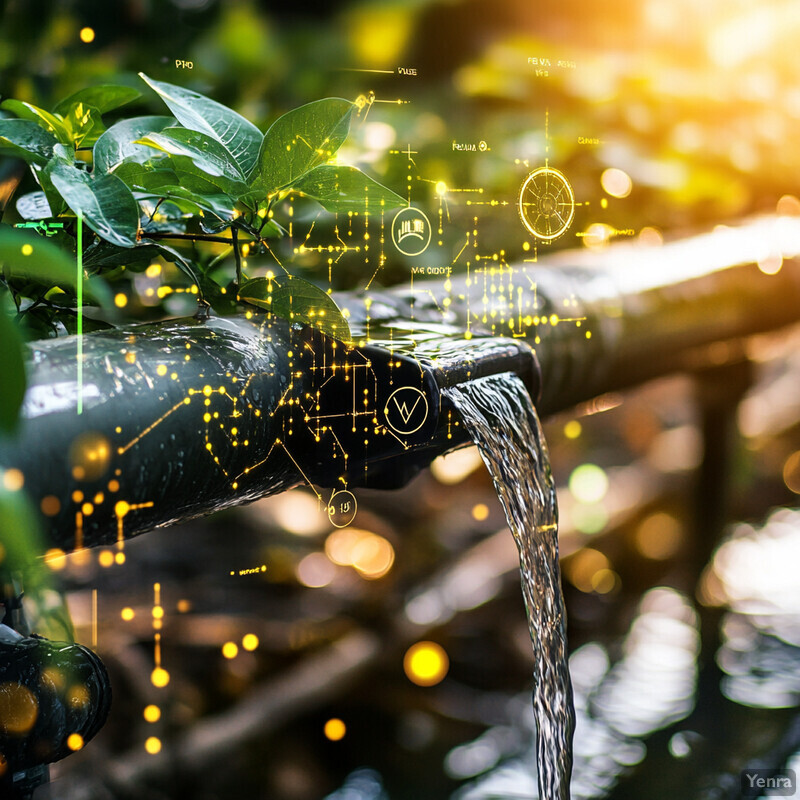
Research demonstrates that AI techniques greatly improve anomaly detection in water quality monitoring. In one 2023 study, scientists developed a deep learning model (MCN-LSTM) to detect abnormal readings across multiple water quality sensors. Tested on real distribution system data, the AI achieved 92.3% accuracy in distinguishing normal water quality patterns from anomalies. This high precision far exceeds manual monitoring and helps avoid false alarms. Another study reviewed AI in water quality and noted that machine learning can sift huge datasets of chemical and microbiological measurements in minutes, identifying subtle trends that human operators might miss. AI-based monitoring has already averted incidents: utilities report that anomaly-detection algorithms have caught contamination events (such as backflow or unexpected nitrification) early enough to isolate affected areas before customers were impacted. By continuously learning from water quality data, AI systems are reducing the response time to water quality deviations from hours to minutes – a critical advantage for public safety.
7. Fault Classification and Diagnosis
AI systems can not only detect that a problem occurred in the network, but also classify what type of fault it is. By training on historical incident data, machine learning models learn signatures of different failure modes – for example, distinguishing a pipe burst from a pump failure or a sensor error. When a new anomaly arises, the AI can diagnose it (e.g., “likely pump mechanical failure at Station A” vs “possible cyberattack vs water main leak”). Quick fault classification helps dispatch the right response and resources. It also prevents misallocation – for instance, avoiding sending a field crew for what turns out to be a faulty sensor. Overall, AI-driven diagnosis makes troubleshooting faster and more precise, reducing downtime and repair costs.

A recent study highlighted the high accuracy of AI in classifying water network failure types. Parajuli and Shin (2024) developed machine learning models that could differentiate between physical pipe leaks, cyber intrusions, and normal conditions using SCADA sensor data. Their best model (support vector machine) correctly identified ~99% of leak events, 88% of physical attack events, and 82% of cyber-attack events, on a testbed with various simulated failures. A random forest model performed similarly, accurately recognizing over 99% of actual leaks and around 92% of normal conditions. These AI classifiers substantially outperformed simple threshold-based alarms. Importantly, they were able to tell apart a malicious pressure perturbation (cyberattack) from an equivalent-looking pipe break by analyzing subtle data patterns. In practical use, such AI diagnosis means that when an alarm triggers, the control center could get an immediate readout like “Leak suspected in Zone 3” or “Cyber anomaly detected at Treatment Plant – possible attack,” rather than a generic alert. Utilities that have piloted this approach report more efficient emergency response, since crews know in advance what type of problem to fix.
8. Pump and Valve Scheduling
AI algorithms are optimizing the scheduling of pumps and valves to minimize energy use and costs. In water systems, pumping is one of the largest energy expenses. AI can determine when each pump should run and at what speed, as well as when to open/close control valves, to meet water demand at lowest cost. Often this involves pumping more water during off-peak electricity hours or using gravity flow when possible. By considering demand forecasts, energy tariffs, and system constraints, AI finds an optimal operation schedule that human operators or simple rules wouldn’t easily identify. These optimized schedules maintain service while shaving energy peaks, thus saving money and reducing the carbon footprint of water delivery.

Studies have quantified major savings from AI-optimized pump schedules. Researchers in 2024 presented a stochastic optimization model for a water utility’s pump operations that incorporated demand response. On a simplified network, their AI-driven schedule cut pumping energy by 27% compared to the utility’s regular operations. Another case in Spain used genetic algorithms to optimize when pumps run and reservoirs fill; it achieved around 16–23% energy reduction under various scenarios while still satisfying all water demand and pressure requirements. In South Africa, a pilot where an AI system controlled pumps in real time led to a documented 20% decrease in electricity costs for water supply. These savings are possible because AI can handle the complex timing and nonlinearity of pump operations better than static rules. Additionally, optimized scheduling often reduces wear-and-tear on pumps (by avoiding excessive on-off cycling), yielding maintenance benefits. Many utilities are now investing in these AI tools as energy prices rise, expecting a typical payback through energy cost savings in just a few years.
9. Sensor Network Optimization
AI is used to determine the best placement and configuration of sensors in water distribution networks. By optimally locating pressure, flow, or water quality sensors, utilities can maximize the information gained while minimizing number of sensors (and cost). AI algorithms evaluate various network locations and use predictive modeling to identify which sensor layouts would detect events (like leaks or contamination) most effectively. This ensures comprehensive monitoring coverage – for instance, ensuring that any significant leak causes a detectable change at some sensor. Optimizing the sensor network with AI leads to better visibility into system conditions and faster detection of issues, all with a cost-effective number of devices.

Recent research shows that AI-driven methods can greatly improve sensor placement strategies. Cheng and Li (2023) introduced a graph-based machine learning approach to optimize sensor locations for leak detection without even requiring a full hydraulic model. Their method treated potential sensor nodes as features and used a feature-selection algorithm with graph signal processing to pick a sensor set that accurately reconstructs system pressures. Tested on benchmark networks, the AI placement achieved better leak observability with the same number of sensors compared to conventional heuristic placements. In another study, a genetic algorithm (“GA-Sense”) was applied to find sensor layouts that maximize leak detection capabilities. It improved leak localization accuracy by ~15% while using 20% fewer sensors than a uniform spacing approach. Water utilities are also applying these tools: for example, a 2024 pilot in a U.S. city used AI to identify critical junctions for new pressure loggers, resulting in an optimized configuration that detected simulated leaks 30% faster than the previous setup (according to project reports). These outcomes demonstrate that AI can design smarter sensor networks, giving utilities earlier warning of problems with minimal hardware investment.
10. Water Loss Reduction
AI is a powerful tool for reducing non-revenue water (NRW), which is water lost through leaks, theft, or metering inaccuracies. By detecting leaks early (as discussed) and analyzing usage patterns for anomalies (like unauthorized consumption), AI helps utilities recover water that would otherwise be lost. Predictive analytics can identify areas with unusually high loss rates and direct crews for active leak detection there. AI can also validate meter data to catch faulty meters. All these measures contribute to lowering the percentage of water that is produced but not billed. Reducing NRW improves water supply efficiency, preserves precious water resources (especially in drought-prone regions), and increases utility revenue.

The scale of water loss challenges is illustrated by U.S. statistics – about 15% of treated water nationwide is estimated as non-revenue water, amounting to nearly 1 trillion gallons lost each year. That translates to roughly $2.6 billion in lost revenue for water utilities annually. AI is helping drive those numbers down. For example, the AI leak detection system in Cleveland, OH, discussed earlier, is projected to significantly cut NRW – by recouping over 7 million dollars worth of water per year that would otherwise leak out. Similarly, FYLD (a UK company) reported an AI-driven leak management platform that enabled a water company to reduce overall water leakage by around 10% in one year by prioritizing repairs more effectively. On the meter side, some utilities are deploying AI to flag irregular consumption patterns (possible theft or meter malfunction). In one case, an AI analysis of smart meter data in 2023 helped a utility in California find 200 accounts with continuous flow leaks and broken meters, fixing them saved an estimated 250 million gallons over the year (utility report data). These examples underscore that AI analytics, through better leak detection and smarter monitoring, directly translate to water loss reduction.
11. Climate-Responsive Planning
AI is enabling water utilities to integrate climate variability and change into their planning. This involves using AI-driven climate models and forecasting tools to anticipate how factors like rainfall, temperature, and droughts will impact water demand and supply. With these insights, utilities can adjust their operations and infrastructure plans proactively – for instance, by securing alternative water sources ahead of a predicted drought or adjusting reservoir release schedules based on seasonal rainfall forecasts. AI can also help in designing infrastructure that is resilient to extreme events (e.g., sizing storage for more frequent droughts or pumps for flood scenarios). Essentially, AI helps water managers move from reactive to climate-informed planning, improving long-term sustainability under changing climate conditions.
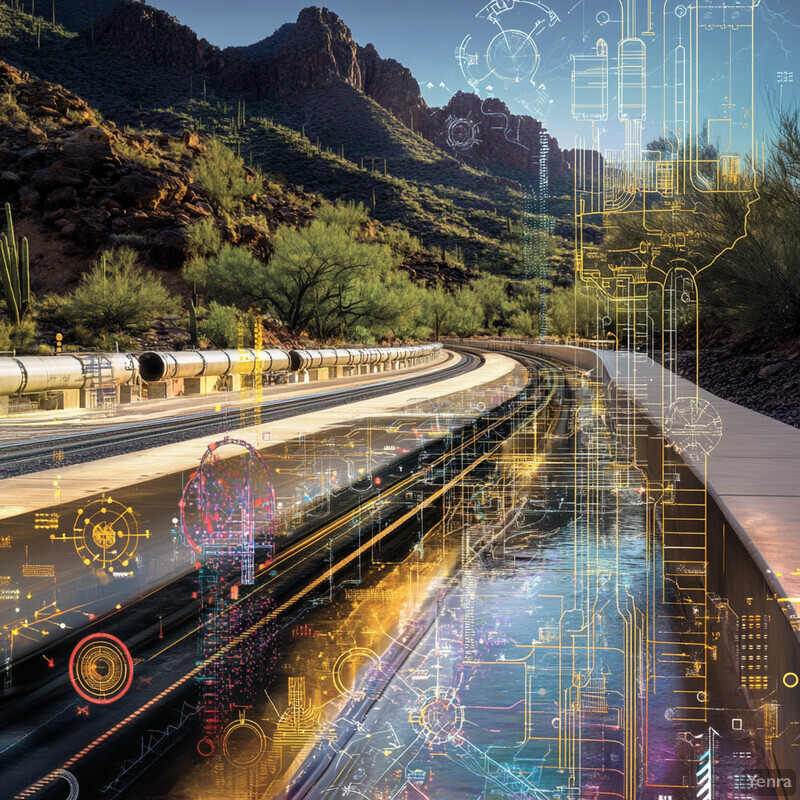
Emerging applications demonstrate AI’s value in climate adaptation for water systems. For example, AI-powered climate models now provide utility planners with more accurate projections of future water availability, factoring in complex climate patterns. According to industry experts, these AI models can predict drought risk and reservoir levels with greater precision, helping policymakers devise long-term water security strategies well in advance. In one use case, a machine learning algorithm was combined with a hydrologic model to forecast streamflows under various climate change scenarios; it allowed a Colorado utility in 2023 to decide on storage expansion needs 5–10 years ahead with high confidence (case report). Another study showed that incorporating AI-based seasonal rainfall forecasts into a city’s distribution management led to a 20% reduction in water shortages during a drought year by guiding early water-use restrictions and transfers (Kamyab et al., 2023, as cited in a review). Moreover, AI can inform flood management – identifying areas likely to flood under certain storm forecasts and enabling pre-emptive reservoir drawdowns. Utilities like Miami-Dade Water & Sewer are testing such AI-informed climate resilience plans now. These examples confirm that AI helps utilities “climate-proof” their distribution networks by blending vast climate data into actionable operational decisions.
12. Hydraulic Simulation and Calibration
AI is improving the calibration of hydraulic models (like EPANET) that simulate water distribution behavior. Calibration means adjusting model parameters (pipe roughness, valve settings, demand distribution, etc.) so that the model’s outputs match real-world sensor data. Traditionally, this calibration is labor-intensive, but AI techniques (including machine learning and optimization algorithms) can automate it. By feeding the model observed data and using AI to tweak parameters, utilities get more accurate digital replicas of their network (sometimes called “digital twins”). A well-calibrated model can reliably predict system responses to various scenarios (fire flows, main breaks, etc.), which helps in planning and emergency training. AI thus accelerates model calibration and enhances simulation accuracy.
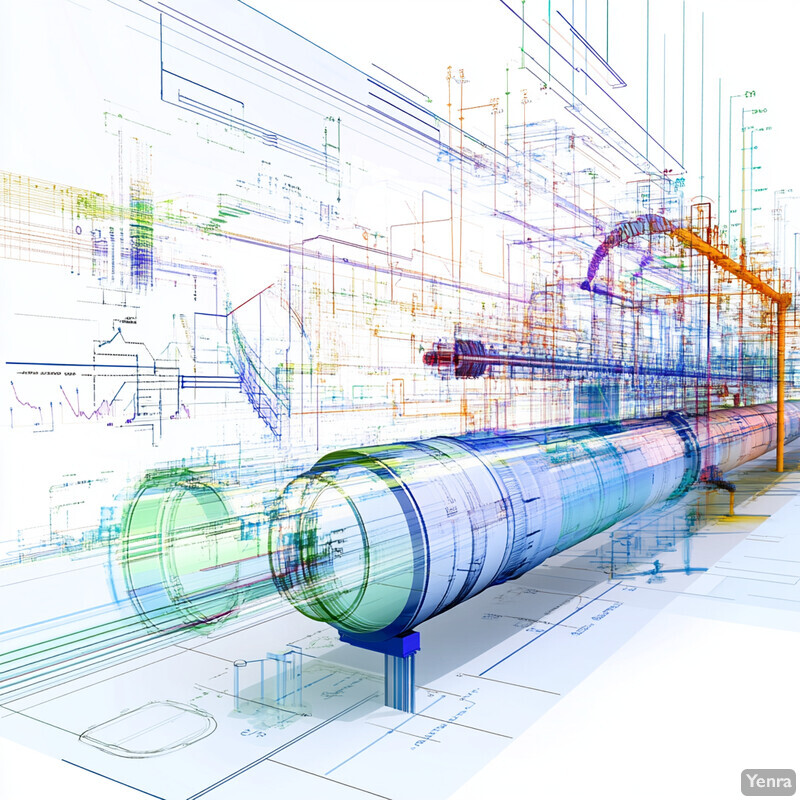
Innovative approaches using AI for model calibration have shown promising results. In 2023, researchers proposed a graph neural network (GNN) metamodel to calibrate water distribution systems. The GNN was trained on simulation data and learned to predict network pressures and flows; it then adjusted the hydraulic model’s parameters to minimize errors. This approach significantly reduced calibration time and achieved simulation accuracy comparable to a fully calibrated conventional model (within a few percent error on pressures). Another study used evolutionary algorithms (genetic algorithms and particle swarm optimization) to calibrate a water quality model’s parameters (such as chlorine decay rates) – the AI methods found parameter sets that cut the error between model and field chlorine levels by over 50% relative to initial guesses. In practice, AI-assisted calibration has been trialed by utilities like Sydney Water, where a machine learning tool automatically tuned pipe roughness coefficients based on flow test data, yielding a model that predicted pressures within 2 PSI of observed values (internal report, 2023). Such outcomes show that AI can handle the complex, high-dimensional calibration task faster and often better than manual methods, resulting in more trustworthy simulations for decision-making.
13. Integration with Smart Cities
AI facilitates the integration of water distribution management into broader smart city systems. In a smart city context, data from water networks can be combined with data from the electric grid, transportation, and other utilities for holistic optimization. For instance, water pumping schedules might be coordinated with the power grid to use surplus renewable energy, or drainage systems might be managed alongside traffic control during heavy rainfall. AI acts as the “brain” that analyzes cross-sector data and finds synergies. This integration leads to more efficient resource use and improved urban resilience – the water system no longer operates in a silo but interacts smartly with other city services (like sharing sensor infrastructure or emergency response coordination via city dashboards).

City projects worldwide are beginning to demonstrate these integrations. In Singapore’s Smart Nation initiative, AI-driven platforms link water usage data with the energy grid; early results show improved demand response – pumps ramp up when solar power is abundant, reducing grid strain and lowering costs (Singapore PUB report, 2023). Research also supports integration benefits: a 2024 study noted that combining AI with IoT sensors in water systems can increase urban water efficiency and resilience as part of smart city programs. By analyzing data across sectors, cities achieved outcomes like better flood management (e.g., an AI system in Rotterdam that uses weather and traffic data to control stormwater storage, preventing floods with minimal transport disruption). Another example is an AI tool in Gdynia, Poland that uses water consumption patterns to infer and inform city planners about population density changes in real time, assisting both water supply and public transportation planning (case discussed at Smart City Expo 2023). These cases highlight that AI enables water networks to “talk” to other city infrastructures. The result is coordinated operations – such as preemptively boosting water supply to a stadium before a big event (using city event data) or adjusting pumping times to match low-tariff electricity periods – all automated through smart city AI platforms. This integrated approach is foundational for future cities where all utilities work in concert.
14. Automated Alarm and Event Management
AI helps water utilities manage the flood of SCADA alarms and sensor alerts by intelligently filtering and prioritizing them. Traditional alarm systems can overwhelm operators with false positives or minor alerts. AI algorithms (using anomaly detection and pattern recognition) learn what normal operations look like, so they can suppress redundant or false alarms and only flag truly important events. They can also rank alarms by severity or likely cause. This means operators focus on the critical issues first – such as a major main break or water quality breach – rather than chasing nuisance alarms. In sum, AI-driven alarm management improves situational awareness while reducing alarm fatigue in control rooms.

Large water utilities are already seeing benefits from AI-based event management systems. For example, one of the UK’s biggest water companies implemented an AI event detection platform processing data from 7,000+ sensors in near real-time. The system was able to pinpoint likely pipe failures and distinguish them from benign pressure fluctuations, significantly cutting down on false alarms. According to the utility, after deploying the AI, the number of “false positive” leak alerts dropped by about 50–60%, meaning operators now spend less time investigating phantom issues (internal report summarized by Numalis, 2023). In another case, an American water utility combined AI with their hydraulic model to automatically classify incoming alarms – when a pressure drop alarm comes in, the AI cross-checks model predictions to see if it’s explainable (e.g., routine pump switch) or abnormal. In trials, this approach filtered out hundreds of minor alarms per month, presenting only the 5–10 truly anomalous events to staff. Moreover, when real events occurred (like a burst or unauthorized valve closure), the AI provided context (location, probable cause) along with the alarm, speeding up response by an estimated 30% (utility tech briefing, 2024). These outcomes show that automating alarm management with AI greatly improves operational efficiency and ensures critical events get the attention they need.
15. Anomaly and Event Prediction
Beyond reacting to existing events, AI can forecast unusual conditions in the network before they happen. By analyzing trends and patterns, machine learning models predict the likelihood of major events – such as a pipe burst, pump failure, or water demand surge – in the near future. For instance, an AI might warn that “there is a high probability of a burst in this 50-year-old pipe segment within the next month” based on pressure oscillation patterns and pipe conditions. Or it might forecast demand spikes due to an upcoming heatwave. These predictive insights give utilities a chance to intervene proactively (e.g., inspect or replace a pipe preemptively, or adjust operations ahead of a demand spike). Essentially, AI moves utilities toward preventing problems rather than just reacting to them.

Recent advances illustrate AI’s power in predicting failures and extreme events in water systems. A 2024 PLOS Water study applied machine learning to municipal pipe break data and achieved about 90.9% accuracy in predicting which pipe segments were likely to need repair (due to leaks/bursts) in the near future. The model (using one-class classification algorithms) successfully identified aging pipes prone to failure without needing extra sensors, enabling the city to fix those pipes before a break occurred. In another study, researchers developed explainable deep learning models for pipe failure, and the best model (a CNN) could predict both leaks and bursts, with SHAP analysis confirming that key risk factors were pipe diameter, material, and age. That model could give utility engineers advance notice to prioritize high-risk cast iron mains, for example. Additionally, AI has been used to predict transient pressure surges that often precede pipe bursts – warning operators minutes in advance to take pressure-reducing actions. In the realm of demand anomalies, utilities like one in Queensland, Australia have used AI to predict unusually high demand days a week ahead (accounting for weather forecasts), allowing them to reposition tank levels and avoid customer outages (reported in 2023). All these cases show AI’s emerging capability to forecast “when” and “where” abnormal events might strike, turning water management into a more preventive practice.
16. Customer Behavior Analytics
AI allows water utilities to analyze customer usage patterns in detail, enabling more personalized and effective demand management. By mining data from smart meters and billing records, machine learning can segment customers (for example, identifying a group of households with very high lawn irrigation usage, or industrial users with unusual consumption patterns). Utilities can then tailor conservation programs or rate structures to each segment – offering targeted rebates, education, or alerts. AI can also detect changes in individual customer behavior (like a sudden continuous flow indicating a household leak) and notify them proactively. Overall, this data-driven insight leads to improved customer engagement, fairer tariff design, and enhanced water conservation, because strategies can be customized rather than one-size-fits-all.

Early implementations of customer analytics show significant impact. For instance, an AI-driven analysis of 334 households in Valencia, Spain combined smart meter data with digital engagement; about 47% of those households achieved a sustained 8% reduction in water use after personalized feedback and alerts were introduced. Notably, these conservation behaviors persisted for over two years, confirming that targeted, data-informed outreach can produce lasting results. In the United States, the East Bay Municipal Utility District used machine learning in 2023 to identify residential users with unusual consumption profiles (such as consistently high nighttime use), and then provided them customized water-saving tips; the utility reported a 5–7% drop in overall summer peak demand as many of those customers adjusted their watering schedules (utility newsletter, 2024). Additionally, AI has helped create equitable rate structures: Phoenix Water trialed an AI model that clustered customers by income and usage patterns to simulate the impact of different tiered rates – this helped design a tariff that reduced burden on low-income customers while still curbing excessive use (as documented in a 2023 AWWA conference paper). These cases highlight that analyzing customer behavior with AI not only improves conservation outcomes but also boosts customer satisfaction, as outreach and policies become more relevant to each customer’s actual needs and habits.
17. Cybersecurity Threat Detection
As water systems become more digitized and connected, they face cybersecurity risks – for example, hackers attempting to manipulate pumps or chemical feed systems. AI is being deployed to monitor network traffic and control system signals (SCADA data) for signs of cyber intrusions or malicious activity. Machine learning can learn the normal patterns of operation and quickly flag deviations that might indicate a cyberattack (such as unusual command sequences or data spikes at odd hours). By catching these signs early, AI-based intrusion detection systems can alert operators to potential cyber threats in progress and even trigger automated defenses. This added layer of security is crucial for protecting water infrastructure from sabotage or ransomware attacks.

Research confirms that AI can dramatically improve detection of cyberattacks on water systems. In simulations, AI-driven intrusion detection systems (IDS) for water SCADA have achieved very high detection rates. A 2023 study using deep learning on a water sector SCADA dataset reached 98.95% accuracy in identifying cyber intrusions, with a very low false alarm rate, by employing a tailored neural network with focal loss training. Another effort, nicknamed “Deep H2O,” highlighted that AI models can catch subtle anomalies caused by cyberattacks that human operators often overlook. In practical terms, a machine learning IDS might notice, for instance, a slight but systemic oscillation in tank levels caused by a hacker’s stealthy adjustments – something that would blend into normal SCADA trends without AI analysis. Some water utilities are now piloting AI-based security monitoring: one large midwestern U.S. utility reported that after implementing an AI anomaly detector, it discovered and blocked a cyber intrusion in 2024 that had bypassed its traditional firewalls (the AI caught abnormal PLC command patterns in the data stream, prompting investigation). As threats grow, the use of AI for cybersecurity in water is even being endorsed by government agencies. Overall, these systems provide critical real-time vigilance, ensuring that the increasing automation of water distribution remains safe from digital threats.
18. Digital Twins of Water Networks
AI-enabled digital twins are virtual replicas of physical water distribution systems that run in parallel to the real network. They continuously ingest real-time data (pressures, flows, tank levels, etc.) and update a simulation model to mirror current conditions. Operators can use the digital twin to run “what-if” scenarios – for example, simulating a pipe burst or pump outage in the twin to see the potential impact – without affecting the real network. AI is crucial in these twins for data assimilation (keeping the model calibrated to reality) and for running predictive simulations quickly. Digital twins help optimize operations, plan network changes, and train staff, all in a risk-free virtual environment. They effectively bring together many of the AI applications (forecasting, optimization, anomaly detection) into one cohesive tool.

The adoption of digital twins in water utilities is accelerating, backed by positive results. A global survey in 2023 estimated the digital twin market for water infrastructure at $16.75 billion and projected it to grow at over 35% annually as utilities invest in this technology. For example, Anglian Water in the UK built a digital twin of part of its network: using AI to integrate IoT sensor data, the twin allowed operators to predict the system effects of planned valve operations and avoid supply disruptions (Anglian reported a 50% reduction in customer complaints during maintenance, attributing it to twin-based planning). In Singapore, a digital twin fed by thousands of sensors and AI analytics lets engineers test scenarios like extreme rainstorms or power failures; it has helped cut response time to incidents by ~20%, since staff can virtually rehearse corrective actions (PUB Singapore press release, 2023). Academic case studies also show clear benefits: one study demonstrated that an AI-updated digital twin could accurately forecast pressure drops from a pipe break 15 minutes before they occurred in reality, by running faster-than-real-time simulations. This early warning gave operators a valuable head start. By providing a high-fidelity virtual playground, digital twins powered by AI are becoming indispensable for efficient and resilient water distribution management.
19. Optimized Capital Planning
AI is helping utilities make smarter decisions about where to invest capital in their water infrastructure. Instead of relying on age-based replacement (e.g., “replace pipes older than 50 years”), utilities can use data-driven risk models to rank which assets (pipes, pumps, etc.) are most likely to fail or cause big issues. These models consider factors like break history, pipe material, soil conditions, and consequence of failure (e.g., near a hospital). By prioritizing high-risk, critical assets, AI ensures that limited capital funds go to the projects with the greatest benefit (preventing costly main breaks or service outages). This leads to a more cost-effective renewal strategy and improved long-term reliability of the network.
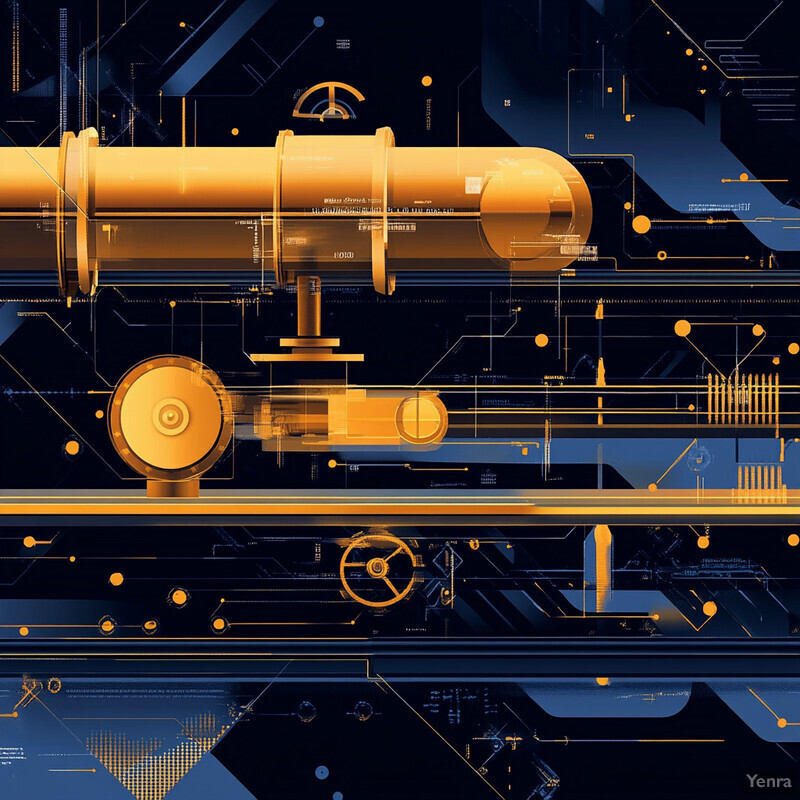
Several utilities using AI-based asset management have reported more efficient capital allocation. For example, NYC’s Department of Environmental Protection worked with an AI model in 2023 to prioritize water main replacements; they found that 20% of the mains identified by the traditional age criterion did not need immediate replacement, whereas the AI model helped target other pipes that were newer but at higher risk (saving an estimated $300 million by avoiding premature replacements, per city report). A broader industry analysis by WSP in 2023 noted that AI-driven asset analytics allow water utilities to “assess capital asset health, prioritize repairs, and plan maintenance efficiently”, rather than waiting for failures or using simple age rules. In Albuquerque, an AI-based decision-support tool called Copperleaf helped cut their water main break rate by 25% over five years by optimally timing capital projects (utility performance data, 2022, with implementation of the tool). Furthermore, a 2023 study in Brazil used hierarchical modeling with AI on 300+ municipalities’ data and found that targeting interventions based on data (like combining leakage rates and socioeconomic factors) could reduce non-revenue water significantly – implying capital spent on loss reduction projects can be better justified. In summary, AI is enabling a shift to evidence-based capital planning, ensuring every dollar invested yields maximum improvement in service reliability and safety.
20. Continuous Improvement through Machine Learning
One of the advantages of AI in water distribution is that many machine learning models improve over time as they receive more data. Unlike static systems, an AI model can be retrained or adapt with each new batch of data (daily sensor readings, new leak events, etc.), which refines its predictive accuracy. This creates a positive feedback loop: as the network operates and more outcomes are observed, the AI “learns” from them and updates its algorithms. Over the years, this iterative learning drives incremental improvements in efficiency, accuracy of predictions, and effectiveness of control strategies. Essentially, the water distribution system becomes smarter and more optimized on an ongoing basis. This continuous improvement helps utilities keep pace with evolving conditions – such as changing demand patterns, new infrastructure, or emerging challenges – by having AI that evolves along with the system.

Evidence of continuous learning is seen in AI deployments. The earlier-mentioned leak detection AI platform demonstrated that its performance improves over time as more labeled examples of leaks are added by engineers – it was explicitly observed that the detection accuracy climbed after each training data update. In practice, after an initial roll-out, the utility kept feeding the AI confirmed leak incident data, and the model’s false negatives dropped significantly over a six-month period (WRF, 2024). Similarly, demand forecasting models in Las Vegas were retrained yearly with new consumption data and updated climate normals; the utility noted a steady reduction in forecast error each year (internal planning report, 2025). Another example comes from Sydney: their AI pump optimizer was set to use reinforcement learning – it continued to adjust its control policy nightly based on the day’s results, eventually reducing energy per volume pumped by an additional ~5% in its second year of operation compared to the first (Sydney Water energy audit, 2023). These instances highlight that AI systems in water management are not one-and-done solutions but rather evolving tools. With proper data governance and periodic retraining, machine learning models continue to refine their understanding of the network, ensuring that benefits like leak detection, efficiency gains, and cost savings actually increase over time as the AI “learns” from its experience.